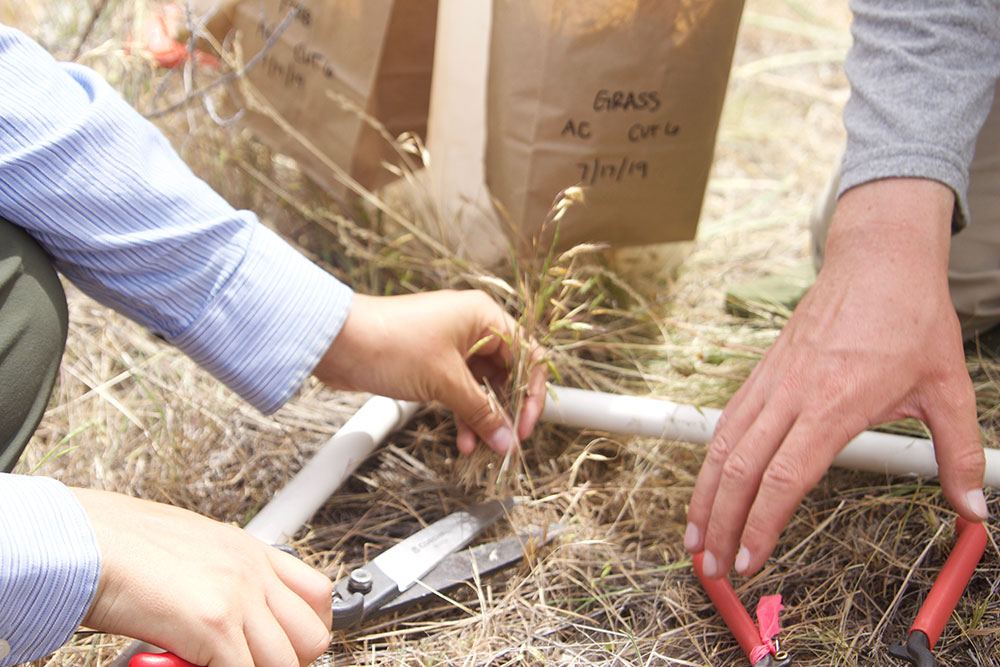
The findings—published in Proceedings of the National Academy of Sciences—quantify the impact of extreme short-term drought on grasslands and shrublands across six continents with a level of detail that was not previously possible. It is the first time an experiment this extensive has been undertaken to generate a baseline understanding of the potential losses of plant productivity in these vital ecosystems.
One of the study’s co-authors, Cal Poly Humboldt Environmental Science & Management Professor Kerry Byrne, says that “what is unique about this study is that each of the 100 sites determined what an "extreme drought," defined as a 1-in-100-year drought, would look like at each site specifically, based on historic weather data for each site. What we observed was a greater reduction in plant biomass, a key part of the carbon cycle, than previously reported losses in drought studies for grasslands and shrublands globally.”
“We were able to determine that the loss of aboveground plant growth—a key measure of ecosystem function—was 60% greater when short-term drought was extreme compared to the less severe droughts that have been more commonly experienced historically,” Colorado State University Biology Professor Melinda Smith, the study’s coauthor and lead says. “Past studies suffered from methodological differences when estimating the impacts of extreme drought in natural ecosystems, but our standardized, distributed approach here addressed that problem.”
Smith added that the project also showcases the variability in drought response across grassland and shrubland ecosystems. The results offer both a review of the global impacts of climate change as well as a glimpse into which areas will be most stressed or most resilient in the coming years.
Gathering Global Drought Data on Grassland and Shrubland Ecosystems
Known as the International Drought Experiment, the newly published research originally dates back to 2013 as part of the National Science Foundation’s Drought-Net Research Coordination Network. Altogether, there are more than 170 authors representing institutions from around the world cited in the new PNAS study, which was completed over the last four years.

To gather their data, researchers—which included graduate and undergraduate students from Cal Poly Humboldt—built rainfall manipulation structures to experimentally reduce the amount of naturally occurring precipitation available to ecosystems for at least a full growing season. About half of the participating sites imposed extreme drought conditions with these structures, while the rest imposed less severe drought for comparison.
As Earth’s climate continues to change, short-term droughts that are statistically extreme in intensity will become more common. But because of the historic rarity of extreme droughts, researchers had been unable to estimate the actual magnitude of their ecological consequences.
To help close that research gap, researchers studied grasslands and shrublands, which cover about 40% of the earth’s terrestrial surface and store more than 30% of the global stock of carbon. Furthermore, these systems support key livelihoods such as livestock production.
“As water-limited systems, grasslands and shrublands are especially vulnerable to climate change, as are the people and animals that depend on them,” Byrne says. “Although we found that plant biomass at our two sagebrush steppe sites in southeastern Oregon were relatively resistant to the imposed drought, the power of this study is in the replication. Overall, the 100 sites included in this study showed striking decreases in plant biomass after just a single year of extreme drought.”
The team is currently examining data collected from the full four years of the project to now assess multiyear drought impacts globally.